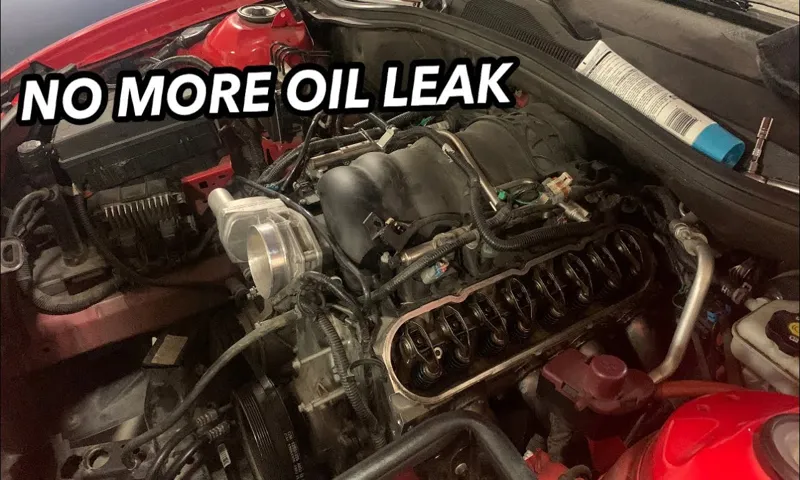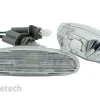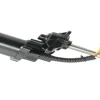Welcome to our blog on how to replace gaskets on a tonneau cover! If you own a truck or SUV with a tonneau cover, you may have noticed that over time, the gaskets on the cover can become worn or damaged. This can lead to water leakage, dust and debris entering the truck bed, and overall reduced functionality of the cover. But fear not! Replacing the gaskets on your tonneau cover is a relatively simple process that can be done in just a few steps.
In this blog, we will guide you through the process, providing you with all the information you need to successfully replace the gaskets and restore your tonneau cover to its full potential. Think of the gaskets on your tonneau cover as the seals that keep everything tightly in place. Just like the weather stripping around your doors and windows, the gaskets on your tonneau cover create a watertight and airtight seal, ensuring that nothing gets in or out of your truck bed.
Over time, these gaskets can become worn, cracked, or damaged, compromising their ability to form an effective seal. This can lead to all sorts of problems, including water leaks during rainstorms, dust and debris getting inside your truck bed, and even potential damage to your cargo. Replacing the gaskets is not only a matter of functionality but also of aesthetics.
A worn-out gasket can make your tonneau cover look old and neglected. By replacing the gaskets, you can give your truck or SUV a fresh and clean look, all while ensuring that your cargo remains protected. So, whether you have a tonneau cover that flips up, rolls up, or retracts, the process of replacing the gaskets is fairly similar.
In the upcoming sections of this blog, we will provide you with step-by-step instructions, along with some handy tips and tricks, to make the process as smooth and easy as possible. Once you’ve replaced the gaskets on your tonneau cover, you’ll be amazed at the difference it can make. No more worrying about water leaks or debris finding its way into your truck bed.
With a properly sealed tonneau cover, you can have peace of mind knowing that your cargo is safe and protected at all times. So, without further ado, let’s dive into the world of tonneau cover gaskets and learn how to replace them like a pro!
Table of Contents
Introduction
If you’re looking to replace the gaskets on your tonneau cover, you’ve come to the right place. Tonneau covers are an excellent addition to any truck bed, providing protection from the elements and added security for your belongings. However, over time, the gaskets on the cover can wear out or become damaged, leading to leaks and decreased effectiveness.
Luckily, replacing these gaskets is a relatively simple task that can be done with just a few basic tools. In this blog post, we’ll walk you through the process of replacing the gaskets on your tonneau cover, so you can keep your truck bed protected and dry. So, let’s get started and get those gaskets replaced!
What is a tonneau cover?
tonneau cover, truck bed, protect, cargo, weather elements, theft, improved fuel efficiency. A tonneau cover is an essential accessory for truck owners who want to protect their cargo and improve the fuel efficiency of their vehicle. Essentially, a tonneau cover is a type of covering that is used to secure and protect the truck bed.
It is designed to keep the cargo in the truck bed safe from the weather elements, as well as from theft. By covering the truck bed with a tonneau cover, truck owners can ensure that their belongings are protected from rain, snow, and other weather conditions. Additionally, a tonneau cover can help to improve the fuel efficiency of a truck by reducing the drag caused by an open truck bed.
With a tonneau cover in place, the truck can cut through the air more efficiently, resulting in improved fuel economy. Overall, a tonneau cover is a practical and functional accessory for truck owners who want to protect their cargo and enhance the performance of their vehicle.

Importance of gaskets
gaskets Introduction: Have you ever wondered how machines and engines are able to operate smoothly without leaking fluids or gases? The answer lies in a small but essential component known as a gasket. Gaskets are the unsung heroes of many mechanical systems, playing a crucial role in ensuring proper sealing and preventing leakage. Although they may seem insignificant, gaskets are of utmost importance in various industries, including automotive, manufacturing, and aerospace.
In this blog, we will explore the importance of gaskets, the different types available, and the benefits they offer. So, let’s dive in and discover how these unassuming little pieces of material keep the world running smoothly.
Common signs of gasket damage
Introduction Gaskets are a crucial component of many machines and equipment as they provide a tight seal to prevent leaks and maintain pressure. However, over time, gaskets can wear out or become damaged, which can lead to various issues. It’s important to be able to identify signs of gasket damage so that you can address the problem before it becomes more severe.
In this blog post, we will discuss some common signs of gasket damage and why it’s important to address these issues promptly.
Step 1: Gather the necessary tools and materials
If you’re looking to replace the gaskets on your tonneau cover, you’ll need to gather a few tools and materials first. The tools you’ll need include a screwdriver, pliers, and a utility knife. Additionally, you’ll need adhesive or sealant to secure the gaskets in place.
It’s important to have all the necessary tools and materials ready before you begin, as this will make the process smoother and more efficient. So, grab your tools and let’s get started on replacing those gaskets!
List of tools
When it comes to any DIY project, having the right tools is essential. In order to successfully complete your project, it’s important to gather all the necessary tools and materials before you begin. This will ensure that you have everything you need and prevent any delays or frustration along the way.
So, what tools do you need for your project? Well, the specific tools will depend on the nature of your project, but there are some basic tools that every DIYer should have in their arsenal. These include a tape measure, a level, a hammer, a screwdriver set (with both flathead and Phillips head), pliers, a utility knife, and a set of wrenches. Additionally, you may need more specialized tools depending on the specific task at hand.
For example, if you’re painting a room, you’ll need brushes, rollers, and a paint tray. If you’re installing a new light fixture, you’ll need wire cutters and a voltage tester. It’s important to do some research and make a list of the tools and materials you’ll need before you start your project.
This will ensure that you’re fully prepared and ready to tackle the job at hand.
List of materials
In order to successfully complete a project, it is important to gather all the necessary tools and materials before you start. This will ensure that you have everything you need to complete the project without having to stop and search for missing items. Gather the necessary tools and materials as listed in the instructions or recipe, and double-check that you have everything on the list.
This will save you time and frustration later on. Having all the materials in one place before you start also allows you to see if you are missing anything and gives you an opportunity to go out and purchase any missing items before you begin. By gathering all the necessary tools and materials beforehand, you can ensure a smooth and efficient project without any interruptions.
So, take a few minutes to collect everything you need before you start, and you will be well-prepared for a successful project.
Step 2: Remove the old gaskets
Alright, so you’ve decided to replace the gaskets on your tonneau cover. Great choice! Now onto step 2: removing the old gaskets. This is an important step in the process, as the old gaskets may be worn out or damaged, and replacing them will ensure a proper seal for your tonneau cover.
To begin, you’ll need a few tools: a screwdriver, a putty knife, and some adhesive remover. Start by accessing the area where the gaskets are located. This may require opening your tonneau cover or removing any panels or clips that are holding it in place.
Once you have access to the gaskets, carefully peel back the old gaskets using the putty knife. Take your time with this step to avoid damaging the underlying surface or any other components of your tonneau cover. As you remove the old gaskets, you may encounter some adhesive residue.
This is where the adhesive remover comes in handy. Apply a small amount of the remover to a cloth or sponge, and gently rub away the adhesive residue. This will ensure a clean surface for the new gaskets to adhere to.
After you have removed all of the old gaskets and cleaned the surface, it’s time to move on to the next step: installing the new gaskets. But that’s a topic for another blog section. Stay tuned to learn how to properly install the new gaskets and get your tonneau cover back in tip-top shape!
How to safely remove the gaskets
To safely remove the old gaskets from your equipment, follow these steps. First, make sure you have the necessary tools, such as a screwdriver or wrench, to remove the gaskets. Then, carefully inspect the gaskets for any signs of wear or damage.
If the gaskets are worn out or cracked, it is essential to replace them to maintain the equipment’s proper functioning. Next, carefully loosen the screws or bolts that are holding the gaskets in place. Be cautious not to damage the surrounding area or other components of the equipment in the process.
Once the screws or bolts are loose, gently lift the gaskets off the equipment. Take care not to force them or use excessive pressure, as this could cause further damage. Finally, clean the area where the old gaskets were located to ensure a clean and smooth surface for installing the new gaskets.
By following these steps, you can safely remove the old gaskets without causing any unnecessary damage.
Step 3: Clean the surface
When replacing gaskets on a tonneau cover, it’s important to start by cleaning the surface thoroughly. This step is crucial to ensure that the new gasket can adhere properly and create a watertight seal. Begin by removing any dirt, debris, or old adhesive from the surface of the tonneau cover using a gentle cleaner or solvent.
A soft brush or sponge can be used to scrub away any stubborn residue. After cleaning, allow the surface to dry completely before continuing with the gasket replacement process. This simple yet essential step will help ensure that your tonneau cover remains leak-free and protects your truck bed from the elements.
So, take the time to clean the surface before moving on to the next step.
Why cleaning is important
cleaning
Step 4: Apply adhesive
Once you have removed the old gaskets from your tonneau cover, it’s time to apply the adhesive and attach the new ones. The adhesive is an important step in ensuring that the gaskets stay in place and create a proper seal. Before applying the adhesive, make sure that the surface of the tonneau cover is clean and dry.
This will help the adhesive bond effectively. Apply the adhesive to one side of the gasket, spreading it evenly with a brush or sponge. Then, carefully position the gasket onto the tonneau cover, pressing it down firmly to ensure good adhesion.
Repeat this process for each gasket, making sure to align them properly. Once all the gaskets are in place, give the adhesive some time to dry and set. This will ensure that the gaskets are securely attached to the tonneau cover, providing a tight and reliable seal.
Choosing the right adhesive
choosing the right adhesive
Tips for applying adhesive
adhesive, apply adhesive, tips for applying adhesive. Applying adhesive is a crucial step in many DIY and home improvement projects. Whether you’re fixing a loose tile, installing new flooring, or even crafting a homemade gift, choosing and applying the right adhesive is key to a successful outcome.
So, how do you go about applying adhesive? Well, the first step is to select the right type of adhesive for your specific project. Take into consideration the materials you are working with and the surface that needs to be bonded. Once you have chosen the right adhesive, it’s time to apply it.
Squeeze a small amount of adhesive onto one of the surfaces you are bonding, and then use a brush or a spreader to evenly distribute the adhesive. Be sure to follow the manufacturer’s instructions for drying times and curing processes. Remember, too much adhesive can cause a messy and uneven bond, while too little adhesive may not provide enough strength to hold the materials together.
Take your time and work carefully, ensuring that you achieve an even and thorough application. And most importantly, allow the adhesive sufficient time to dry and cure before applying any pressure or stress to the bonded materials. So, there you have it, applying adhesive is easy as long as you follow these simple tips.
Happy bonding!
Step 5: Install the new gaskets
Now that you have removed the old gaskets from your tonneau cover, it’s time to install the new ones. This step is crucial to ensure that your cover remains watertight and secure. First, take out the new gaskets from their packaging and inspect them for any damage or defects.
You want to make sure they are in perfect condition before proceeding. Next, carefully line up the gaskets along the edges of your tonneau cover. They should fit snugly and cover any gaps between the cover and the truck bed.
To secure the gaskets in place, use the adhesive provided with the gasket kit. Apply a thin layer of adhesive evenly along the edges of the tonneau cover and press the gaskets firmly into place. It’s important to press down on the gaskets to ensure a good bond between the gasket and the cover.
This will help prevent any water or debris from entering your truck bed. Once the gaskets are installed, give them some time to fully adhere to the cover before exposing them to any extreme weather conditions. This will help ensure a strong and lasting seal.
In conclusion, replacing the gaskets on your tonneau cover is a simple but important task. By following these steps and using quality gaskets, you can keep your truck bed protected from the elements and enjoy the benefits of a secure and waterproof cover.
Proper alignment and positioning
After removing the old gaskets, it’s time to install the new ones to ensure a proper alignment and positioning. This step is crucial in maintaining the integrity of the gaskets and preventing any leaks or malfunctions in the future. To install the new gaskets, start by carefully placing them onto the corresponding surfaces.
Make sure to align the holes properly and ensure that they fit snugly into place. It’s important to take your time during this step and double-check the placement of the gaskets to avoid any mistakes. Once the gaskets are properly aligned, gently press them down to ensure a secure fit.
Depending on the type of gaskets being used, it may be necessary to apply a small amount of sealant to ensure a tight seal. Remember, proper alignment and positioning of the gaskets will play a key role in the overall performance and longevity of your system, so take the time to do it right.
Securing the gaskets in place
“install new gaskets” Gaskets play a crucial role in keeping your engine running smoothly by creating a tight seal between two surfaces. Over time, however, gaskets can wear out or become damaged, leading to leaks and decreased performance. That’s why it’s important to know how to properly install new gaskets.
In this step, we will guide you through the process of securing the gaskets in place. First, make sure to clean the mating surfaces thoroughly to remove any dirt or debris. This will ensure a proper seal and prevent any leaks.
Then, carefully position the new gaskets onto the mating surfaces, making sure they align correctly. Gently press down on the gaskets to help them adhere to the surfaces. Finally, double-check that the gaskets are securely in place before moving on to the next step.
By following these steps, you can ensure a proper installation of the new gaskets and keep your engine running smoothly.
Step 6: Allow adhesive to cure
Once you have applied the adhesive to the gaskets on your tonneau cover, the next step is to allow the adhesive to cure. This is an important step in the process as it ensures that the gaskets are securely bonded to the tonneau cover and will provide a tight seal. The curing process can take some time, so it is important to be patient and not rush the process.
It is recommended to leave the tonneau cover undisturbed for at least 24 hours to allow the adhesive to fully cure. During this time, it is best to keep the tonneau cover in a clean and dry environment to avoid any potential damage or contamination. Once the adhesive has cured, you can then proceed with reinstalling the tonneau cover onto your vehicle.
Recommended curing time
One crucial step in any adhesive application is allowing it to cure properly. Curing time refers to the duration needed for the adhesive to fully dry and reach its maximum strength. It is essential to adhere to the recommended curing time to ensure the adhesive’s effectiveness.
The specific recommended curing time can vary depending on the type of adhesive used and the materials being bonded. It is usually mentioned in the manufacturer’s instructions or on the product label. Rushing the curing process or not allowing enough time for the adhesive to cure can result in weaker bonds or even adhesive failure.
On the other hand, giving the adhesive sufficient time to cure ensures a strong and durable bond that can withstand the test of time. So, make sure to follow the recommended curing time provided by the manufacturer for optimal results.
Conclusion
And there you have it, folks! Now you know how to replace the gaskets on your tonneau cover with ease and finesse. With our step-by-step guide, you can say goodbye to any leaks and hello to a beautifully sealed and functioning cover. Just remember, replacing gaskets on a tonneau cover is a bit like playing doctor – you need to have a steady hand and a good eye for detail.
But fear not, with a little bit of patience and some handy tools, you’ll be a gasket-replacing pro in no time. So go ahead, show off your skills to your friends and family. Impress them with your knowledge of tonneau cover maintenance and maybe even save them a few bucks by doing the repairs for them.
Who knows, you might just become the local tonneau cover hero! Now, it’s time to get out there and conquer those gasket replacements. Happy fixing, and may your tonneau cover always be leak-free!”
Benefits of replacing gaskets
In the process of replacing gaskets, it’s important to give the adhesive enough time to cure before moving on to the next step. Allowing the adhesive to fully cure ensures a strong and secure bond between the gasket and the surfaces it is sealing. This is crucial for preventing leaks and ensuring the gasket’s longevity.
While it may be tempting to rush the process and move on quickly, taking the time to allow the adhesive to cure properly will pay off in the long run. So, why is it so important to let the adhesive cure? Well, just think about it like baking a cake. If you take the cake out of the oven too soon, it will collapse and be a gooey mess.
But if you let it bake for the recommended time, it will come out perfectly moist and delicious. The same principle applies to adhesive curing. So, be patient and give the adhesive the time it needs to do its job effectively.
Your gasket replacement will thank you for it.
Tips for maintaining gaskets
When it comes to maintaining gaskets, one important step is to allow the adhesive to cure properly. This is crucial because the adhesive needs time to fully bond and create a strong seal. Rushing this step can result in a weak bond and ultimately lead to leakage or failure of the gasket.
The curing time will vary depending on the type of adhesive used, so it’s important to follow the manufacturer’s instructions. In general, it’s best to give the adhesive at least 24 hours to cure. During this time, it’s important to avoid putting any stress or pressure on the gasket to ensure the adhesive can fully set.
So be patient and give the adhesive the time it needs to cure properly for a durable and long-lasting gasket seal.
Final thoughts
“Allow adhesive to cure” Now that you’ve applied the adhesive to your project, it’s time to let it do its magic and cure. This step is essential to ensure that the bond is strong and long-lasting. Adhesive curing is a process where the adhesive goes through a chemical reaction that hardens it and strengthens the bond.
The time it takes for the adhesive to cure can vary depending on the type of adhesive used. Some adhesive types can cure within a few hours, while others may take several days. It’s important to follow the manufacturer’s instructions on the curing time for the specific adhesive you’re using.
During the curing process, it’s crucial to avoid handling or putting any stress on the bonded materials. This could disrupt the curing process and weaken the bond. So be patient and let the adhesive cure completely before moving on to the next step.
FAQs
How do I know if I need to replace the gaskets on my tonneau cover?
You may need to replace the gaskets on your tonneau cover if you notice water leaks or a deterioration in the seal of the cover.
Can I replace the gaskets on my tonneau cover on my own?
Yes, you can replace the gaskets on your tonneau cover on your own. It is a relatively simple process that can be done with basic tools.
What tools do I need to replace the gaskets on my tonneau cover?
To replace the gaskets on your tonneau cover, you will need a screwdriver or socket set, pliers, and a rubber mallet.
Where can I purchase replacement gaskets for my tonneau cover?
Replacement gaskets for tonneau covers can be purchased at most truck accessory stores or online.
Are there different types of gaskets for tonneau covers?
Yes, there are different types of gaskets for tonneau covers, including adhesive gaskets, snap-on gaskets, and peel-and-stick gaskets. The type of gasket you need will depend on the make and model of your tonneau cover.
How often should I replace the gaskets on my tonneau cover?
The frequency of gasket replacement will depend on the usage and condition of your tonneau cover. It is recommended to inspect the gaskets regularly and replace them as needed.
Are there any special instructions for replacing the gaskets on my tonneau cover?
It is important to follow the manufacturer’s instructions when replacing the gaskets on your tonneau cover. Make sure to clean the area thoroughly before applying the new gaskets and ensure a proper seal once installed.



